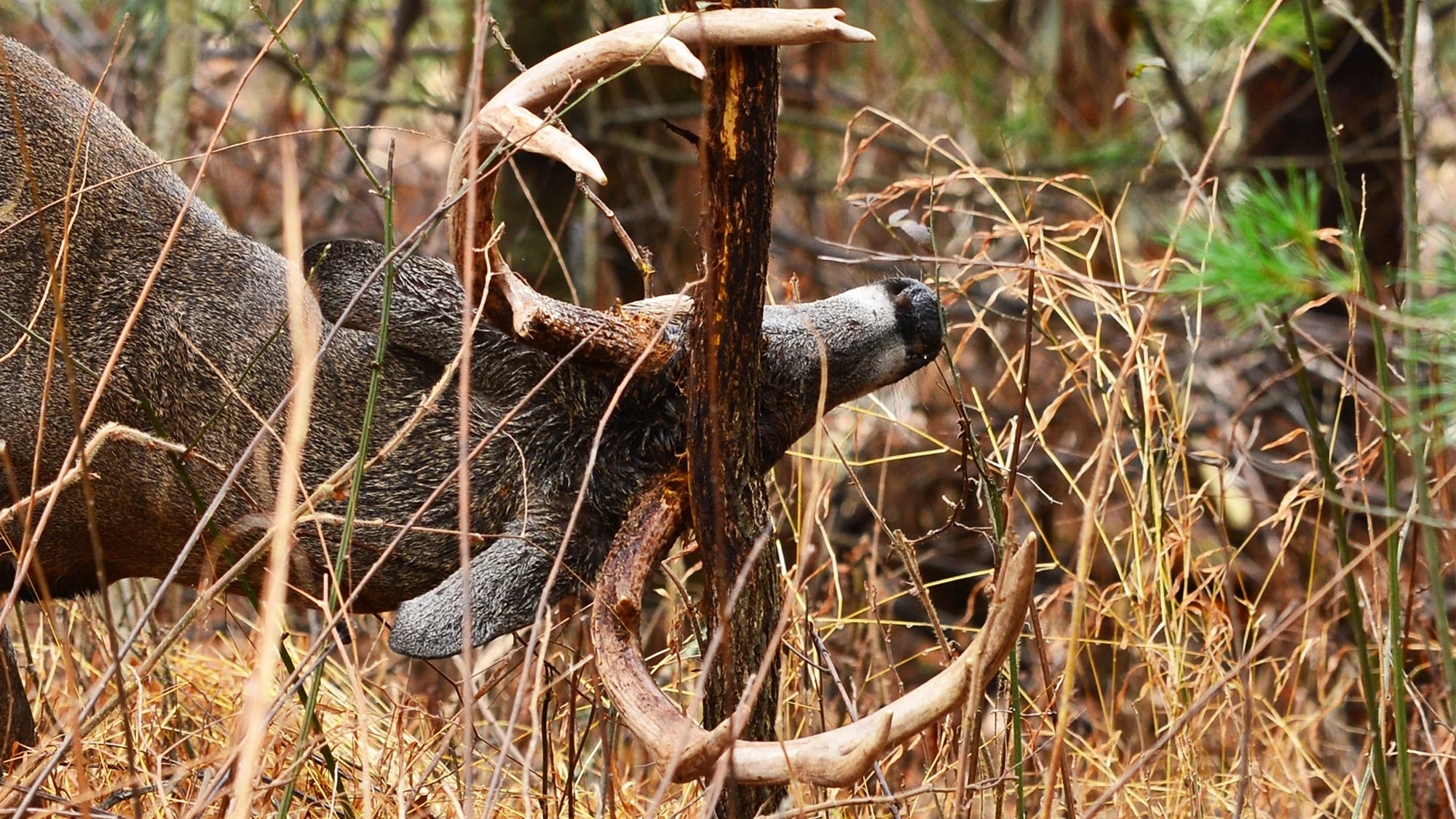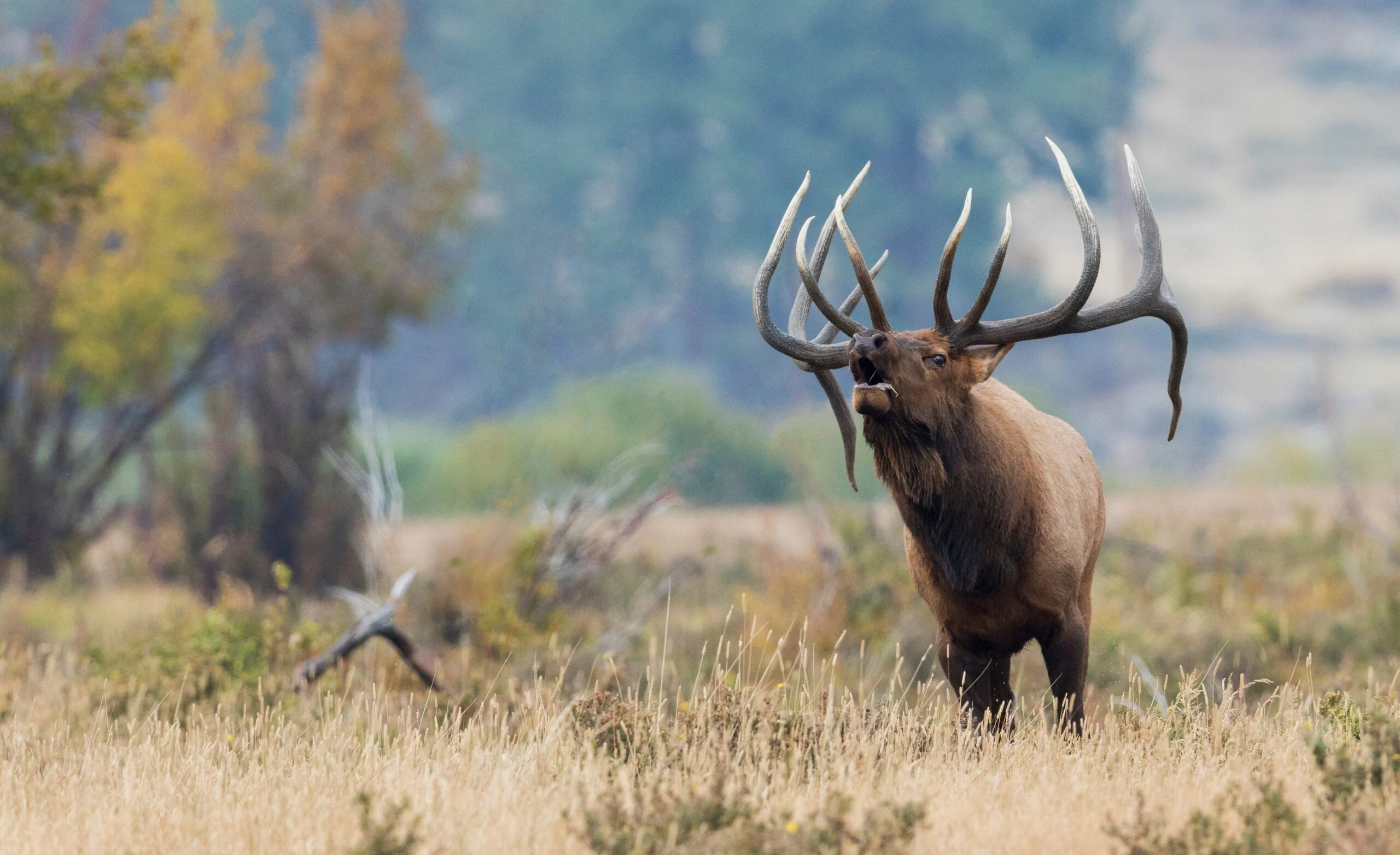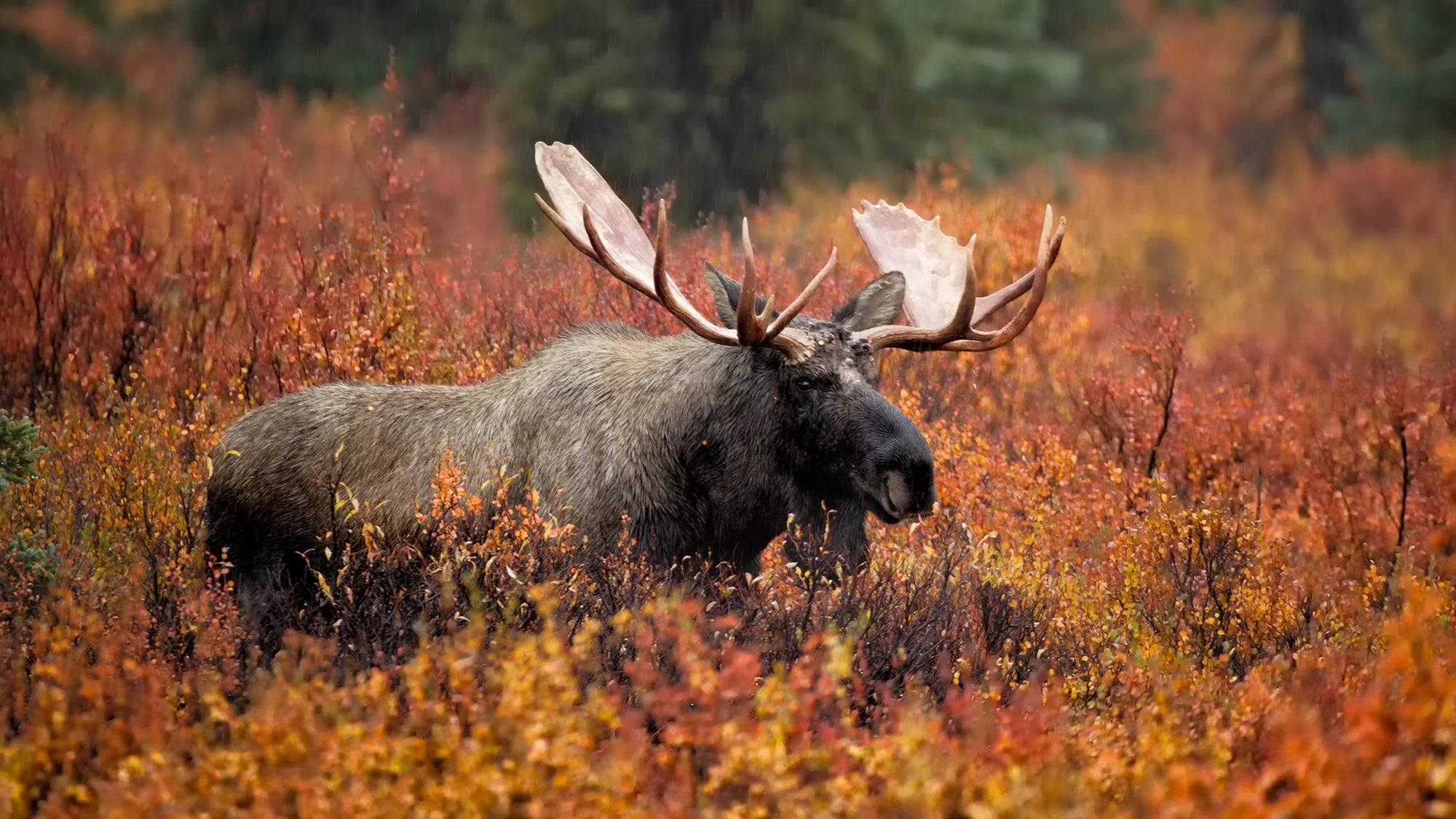When humans fall into a rut, it’s understood that our lives have become routine and boring. When a road becomes rutted, overuse in wet conditions have resulted in a dangerous drive. But if you’re a deer, elk, or moose, rutting is the highlight of your year.
Rutting is the term ascribed to the breeding season for the deer species. Unlike human beings, who can produce young regardless of the calendar month, deer need to time their baby-making just right, which they do in a sort of exquisite fashion. Fawns need to be born when the weather is warm enough and food abundant enough to increase their chances of survival. If deer rut too early, does can drop fawns in late winter (bad news for a baby deer wearing a thin coat and sporting short legs). If they rut too late, fawns might not be physically developed enough to survive the ensuing winter (for the same reasons).
So, across much of deer range, the timing of when a fawn is conceived is critical. That means that the majority of female deer need to come into heat at approximately the same time, and males have to get them pregnant during a pretty short window of opportunity. Because of this concentrated activity, it can resemble something of a frenzy, like a migration of waterfowl or the spawning run of salmon. Hunting seasons are often centered around the rut, because it’s a time of heightened deer activity, and gives hunters their best chance at effectively managing the here. Here’s a look at how the big three of North American deer species—deer, elk, and moose–go about rutting.
The Whitetail and Mule Deer Rut

Leading up to and during the rut, bucks make rubs on small trees to advertise their presence. Adobe Stock
While there are slight variations, the continent’s two main deer species–whitetails and mule deer–rut basically the same. The breeding peak for each species is roughly late October through early December. This insures a fawn drop of late April through early June, given the 200-day gestation period for baby deer.
While bucks are able and willing to breed a doe as soon as they shed velvet from their antlers, no mating occurs until a doe enters her estrous cycle. Since bucks are ready weeks before this, they become increasingly active and aggressive as the fall wears on. Bucks will paw the ground to form oval bare-earth patches called “scrapes” and rake their antlers against tree and shrubs to make what hunters know as “rubs.” while we don’t know the entire purpose of these forms of buck sign, they’re likely a communication tool to advertise a buck’s presence to other deer in the area. Rubbing and scraping begin as soon as a buck sheds the velvet from his antlers and continues to build until actual breeding begins.
When the first does enters her heat cycle, it generates a lot of excitement, with multiple bucks chasing the doe. In a balanced herd, only the most dominant, physically aggressive buck will win the right to breed that doe. Once that is settled, the male and female pair will remain together for two to three days before the buck seeks another mate. Sometimes, however, this pairing is broken up by another buck, who may win the right to breed the female. While not a common occurrence, research has shown that about 20 percent of twin fawns were sired by different bucks. Unlike elk, deer typically do not form harems or herds during the breeding season. Throughout much of the country, the whitetail rut peaks around the middle of November and is considered the Main Event of the entire hunting season; people mark their calendars and plan vacations around the best days of the whitetail rut
.
The Elk Breeding Season

A huge bull elk bugles during the September rut. Adobe Stock / Danita Delimont
The elk rut is among the most exciting breeding rituals on the North American continent and a highlight of early fall in the states and provinces where the animals live. As with whitetail and muley bucks, bull elk are ready to breed as soon as velvet leaves their antlers (usually in late August), but the heart of the elk rut typically occurs from mid-September to mid-October. In the weeks preceding the rut, bulls advertise themselves by bugling; a drawn-out, high-pitched squeal that often ends with grunting. Bull elk bugles can be heard from a great distance in the right conditions and are a signature sound of fall across elk range. Cows are also quite vocal, mewing and chirping as they talk to each other and to nearby bulls.
Another fascinating aspect of the elk rut are “wallows” created by bulls as they prepare for the breeding season. Wallows are made in damp or wet low-lying spots; after digging up a wallow with his hooves and urinating in it, a bull elk will literally bathe himself in the stinky goo by rolling in the muck. It’s thought that the scent attracts cows as they come into heat and serves as an “I’m the boos” sign for rival bulls.
The elk rut differs greatly from the deer rut in that dominant, or “herd” bulls assemble harems of cows that can number two dozen animals or more. While he attempts to keep all these cows in one group, the herd bull will breed any cow that comes into estrous. Typically, the oldest cows come into heat first, followed by the younger females. Researchers have found that bulls in the 8- to 9-year-old age range comprise most herd bulls.
As the herd bull shepherds his charges through the mountains, he can expect challenges by other bulls seeking to take over his role. While bugling and bluster will help him avoid many fights, sometimes showing off is simply not enough and a serious brawl ensues. Because of their physical size and towering antlers, bulls can be seriously hurt or even die, during a fight. Most of these showdowns, however, are avoided by pre-rut sparring bouts where bulls can assess each other’s strength and attitude.
Because elk are so vocal during the rut, calling is a big part of hunting the animals, and every September, legions of mostly archery elk hunters (as most rifle seasons open after the rut’s peak) head into the western backcountry with the dream of calling a big bull elk into bow range.
What Is Rutting for Moose?

A large bull Alaska moose makes his way through Denali National Park.
A large bull Alaska moose makes his way through Denali National Park. Stan / Adobe Stock
Although moose are the largest of the deer species, their rutting behavior is more hidden and shrouded in mystery—mainly because moose live in remote areas far from human eyes and ears. That said, a lengthy study of the moose rut was conducted by researcher Vic Van Ballenberghe
in Alaska’s Denali National park that beginning in the 1980’s, and his observations paint a picture of the moose’s fascinating breeding ritual.
The early stages of the moose rut begin in late August, as cows and bulls abandon a regimen of heavy eating in the summer to lay on fat for the winter. In his study, Van Ballenberghe determined that mature, dominant bulls do the vast majority of breeding (up to 88 percent according to his estimates), while younger, smaller bulls are only successful with the handful of cows missed by these older bulls. Dominant bulls earn their rank not only by their superior size, but also from winning sparring matches and fights with other bulls.
Like elk, moose create wallows in low, wet ground, where they urinate and churn up the soil with their hooves, then roll in the heady mixture that serves as an olfactory and visual proof of their sexuality and prowess. Bulls also thrash brush and small trees with their sprawling antlers, again a visual and auditory reminder of their virility and breeding readiness. Cows also compete with other cows, the older (more dominant) females getting first access to prime bulls.
The heart of the moose rut begins in September when social groups of as many as two dozen cows form. When rival bulls meet to determine who gets the breeding rights to these harems, violent fights can occur. These brawls go far beyond the sparring matches young bulls engage in and, researchers found, can last for hours and sometimes result in the death of a combatant. Researchers reported hearing the sounds of such battles from as far as a mile away. They also learned that bull moose don’t become successful breeders until they are at least 7 years old, and they may maintain that status until they’re 11 or older. While it’s rare for Denali bulls to live beyond 13, researchers found that cows could live and produce calves long after, with some cows still calving at 20 years of age.
Unlike the whitetail rut, which can be stretched over a months-long time frame in some cases, the moose rut is short and intense and is over by early October. Researchers surmised this timing is even more critical in northern climes so calves can be born at just the right time the following spring. And while a cow moose will likely only breed with one bull per year, a dominant bull may breed as many as 25 cows in a single season.
As with elk, vocalization are a key part of the moose rut. Bulls grunt by making a short, low “ugh” sound and cows call with a higher pitched and more drawn out “eeee-urr” sound. Hunters imitate both vocalizations to try and call moose into range during the rut. If you ever get a chance to do it and are successful, you’ll be checking off what for many hunters is lifetime buck-list achievement.






